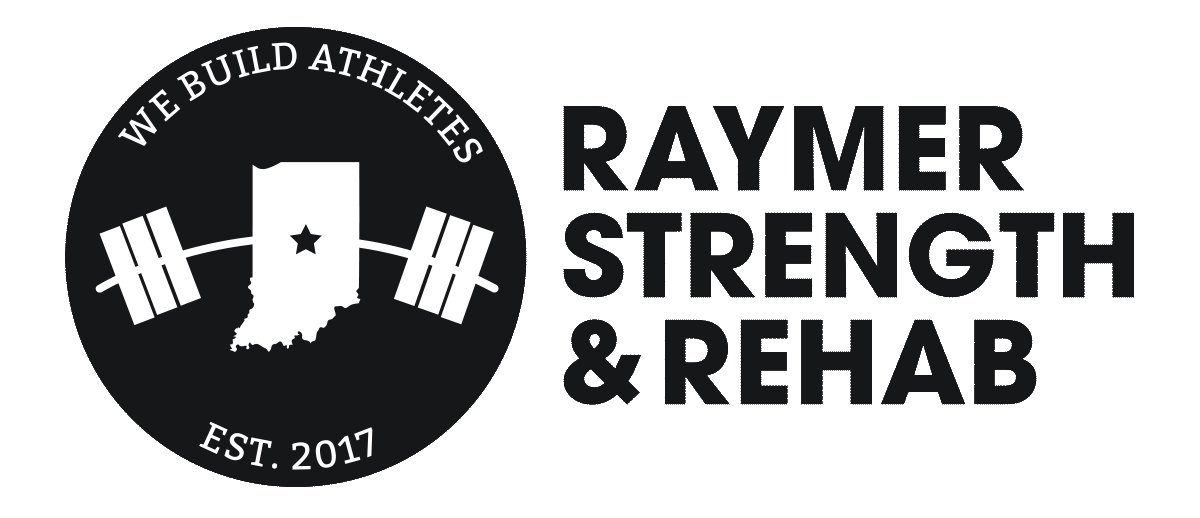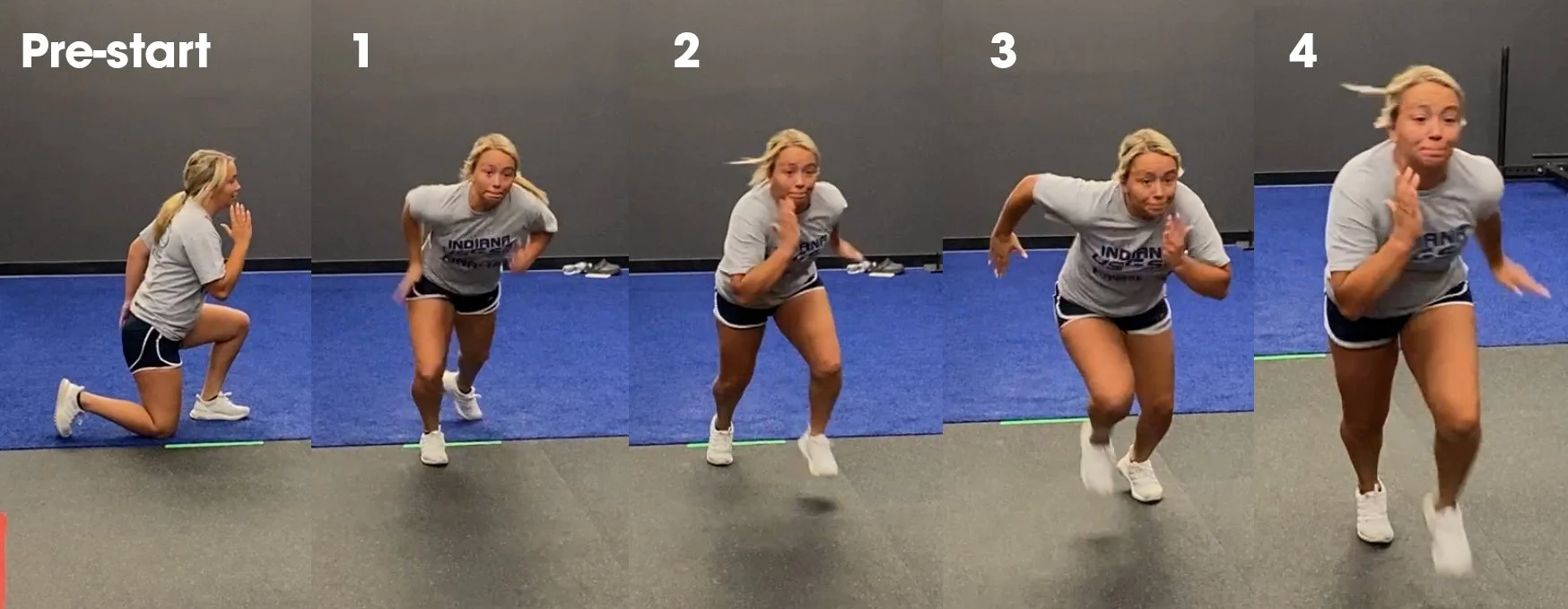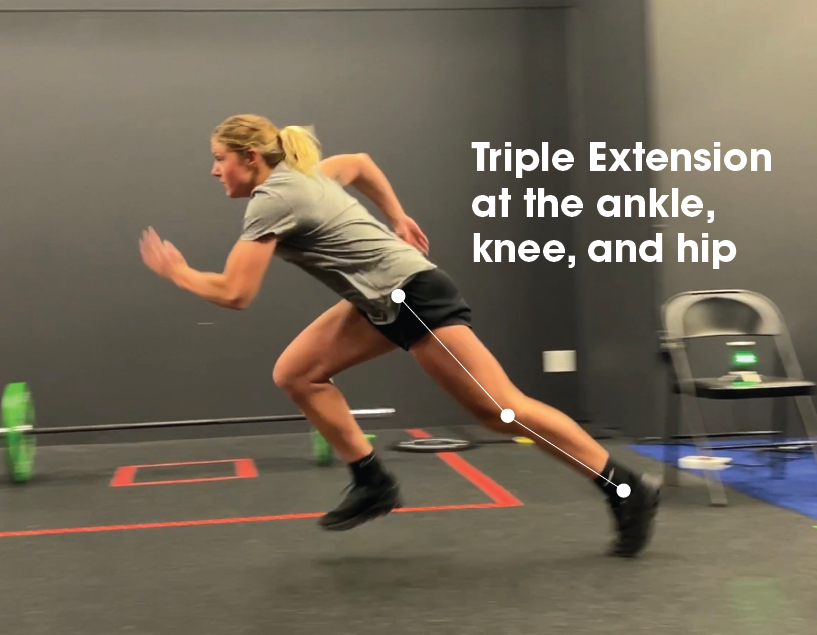Speed Kills: The First Step to Getting Faster
You’d be hard pressed to find an athlete that doesn’t want to improve their speed. Being faster than your opponent can be an incredible advantage, but being fast is more than just the MPH an athlete hits with their top-end speed.
Performance coaches often focus on top-end speed. It’s clearly measurable, and it’s an important component to helping athletes increase their speed. However, some coaches focus almost entirely on top-end speed.
This is a problem. Athletes rarely hit top-end speeds in game situations.
Why? They are constantly changing directions, starting and stopping, or running out of space as the pace of the game ebbs and flows. By focusing only on top-end speed, coaches are leaving the job half-done.
I’ll use a metaphor from one of my favorite movie franchises - The Fast and the Furious. In a quarter mile race, the car with the better driver that can get to a higher speed quicker than it’s opponent is the one that’s going to win the pink slip– even if that other car can ultimately reach a higher speed after the quarter mile race is over.
The first step to getting faster is reaction and acceleration.
To become faster, athletes need to get quicker at reaching higher speed thresholds.
This is how a slower athlete can beat a faster athlete— through higher sport IQ, agility, and acceleration.
Let’s break down acceleration, and how it starts with a good First Step.
What is the First Step?
In the performance training community, the first step is often considered to include the first couple of steps. At Raymer Strength, we consider it to represent the first three steps when coaching our athletes.
The First Step isn’t limited to forward movement. It can also mean moving forward, backward, side-to-side… you name it.
In this article, we’re focusing on an athlete moving moving directionally forwards and accounting for their first three steps.
This phase of acceleration can be a trained skill. Here’s how we break it down.
Coach J coaches high school volleyball athlete Lowyn Coffey on posture initial step mechanics
3 First Step Components
High school softball athlete Taylor Gasvoda (Twitter) shows great self-organization in her First Step from a half kneeling start.
Athletes are effective at self-organizing in finding their own efficient movement. Ask them to move fast often enough, and they figure out naturally what works and what doesn’t for them. However, a little bit of tweaking is sometimes necessary to help them get past some technical obstacles.
The First Step has three technical components:
Pre-Start Posture
Post-Start Posture / Position
Explosive Extension
This is what has been proven to work for our athletes (through laser measurement). We are not track coaches, so when we approach these discussions, we’re doing it through the lens of an athlete playing a dynamic game.
1. Pre-Start Posture
From a static start, the athlete should prepare themselves for with the correct posture before they start moving. This means torso leaning forward and weight loaded on the balls of the feet, knees bent, and hips hinged. If the athlete is in a position where the arms are free (like a 2 point stance), the opposite arm is up and forward compared to the front leg.
In a dynamic sport context, “pre-start posture” isn’t going to be perfect or consistent. An athlete will need to depend on their Sport IQ and agility to get themselves into a good position to take off quickly in the direction needed.
2. Post-Start Posture / Position
To start moving, the athlete pushes down and back off of their forward leg and then drives their stride leg (back leg) forward. Arms should drive opposite to the leg to help momentum and stride frequency.
Now that the athlete is actively moving, we look at several things:
Violent arms: Arms drive forward with intent and velocity at the shoulder
Maintaining a forward torso lean: The torso shouldn’t come up until the athlete is done accelerating (way past the First Step)
Foot strike position and stride length: The ball of the foot must be striking the ground in this phase, and adjusting for the correct stride length will ensure that.
High school basketball athlete DJ Green (Twitter) takes off.
3. Explosive Extension
Now that the athlete is using moving with the right arm drive, forward lean, and foot strike position, we focus on getting full extension out of the ankles, knees, and hips.
In the performance community, we call this “Triple Extension” (3 joints are fully extending). This is where most of the power comes from in many athletic movements, like sprinting, jumping, or cutting. We want the athletes to use all of the power available to them, and in order to do that, they must reach full extension of these joints.
Sprinting is a useful way to develop power through triple extension, and there are also many loaded movements that we utilize at Raymer Strength to help athletes build a bigger engine for their power.
Collegiate soccer athlete Lily Wilson (Twitter) times her 10 yd sprint.
Common First Step Technique Pitfalls
High school softball athlete Tessa Kramer (Twitter) works on her foot strike and stride length.
Over the years, we’ve seen some common issues. Here’s how we cue athletes to overcome these technical obstacles.
Issue: The athlete is hitting the ground with their heel or mid-foot.
Coaching Strategy: We use low-profile cones and space them out at graduating distances for that athlete to practice finding their right stride length.Issue: The athlete straightens immediately instead of maintaining the forward lean, stunting acceleration.
Coaching Strategy: We practice falling starts to help the athletes lean into the First Step.Issue: The athlete stomps the ground instead of springs off of it– something we call “being angry at the floor.”
Coaching Cue: We make comparisons to animals sprinting so that they can make the connection to spring. “Have you ever heard a house cat run? No– because they are on their toes and springing forward. Have you ever watched a dog start to run, but they are on a rug that slides away? The rug kicks back behind them. You need to push the floor away and behind you.”Issue: The athlete leans forward with their front knee on the first movement instead of exploding off of the front leg.
Coaching Cues: “Feel like you’re jumping into your first step to try and get that explosive behavior.” OR “Punch down and back into the ground and drive that back leg forward as fast as you can.”
Our Speed Development Philosophy
For an athlete to realize their full speed potential, they need to…
Learn Technique
Practice Speed Repetitions (sprints, cuts, etc.) with adequate rest (learn more)
Participate in Comprehensive Performance Training
Our comprehensive performance training protocol incorporates resistance training/lifting, plyometrics, mobility, speed, and agility. Without resistance training, in particular, athletes are leaving a big piece of their potential behind.
Why? Resistance training helps athletes build bigger engines to increase their power and reduces chances of injury by preparing the body for higher loads. Not only will they run faster, but their bodies will be better prepared for the high speeds.
Learn more about how we approach resistance training at Raymer Strength:
Conclusion
Getting faster starts with a good First Step. It consists of the first several steps and requires good posture pre and post-start as well as explosive extension. Working on the First Step can give a slower athlete an advantage on the playing field over faster athletes.
In order for an athlete to fully recognize their speed potential, athletes must incorporate technique and skill learning, speed repetition with proper rest intervals, and performance training.
If you’re an athlete that wants to improve your speed, we offer training in-person in Central Indiana, and online.







